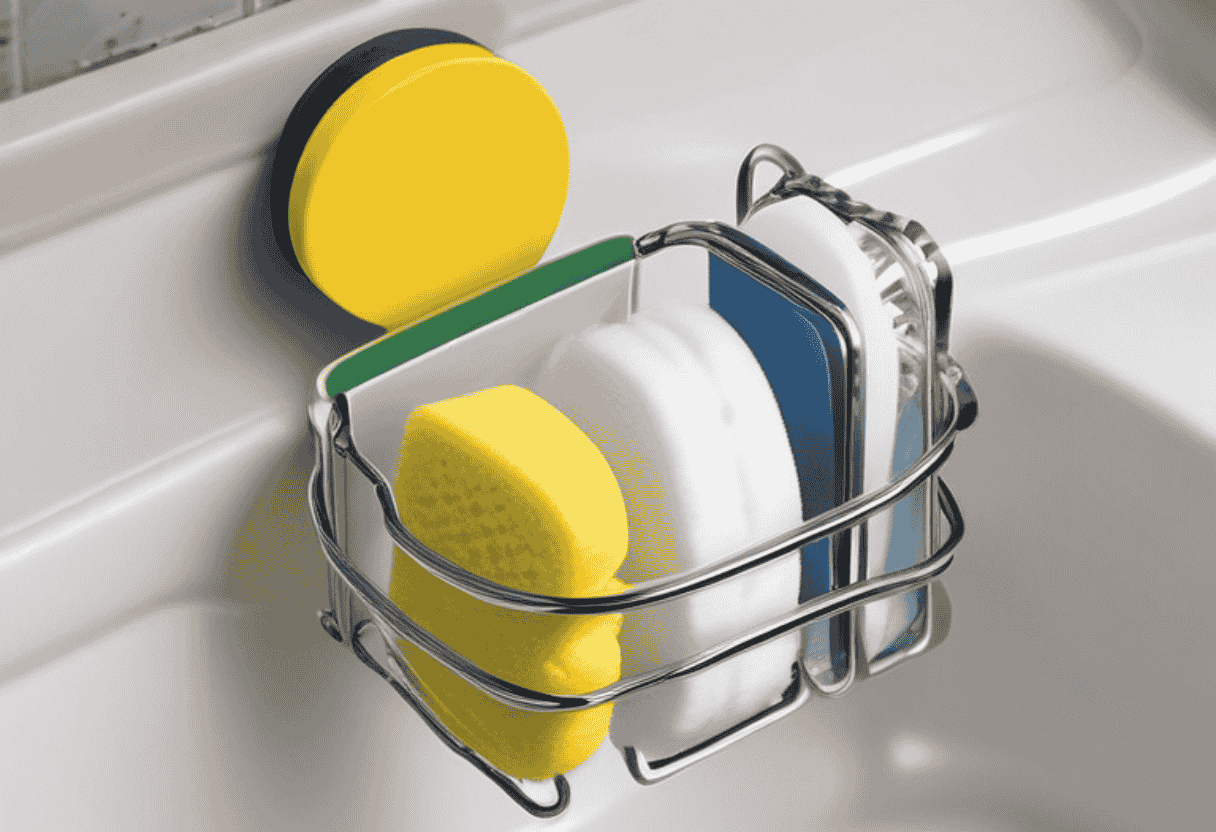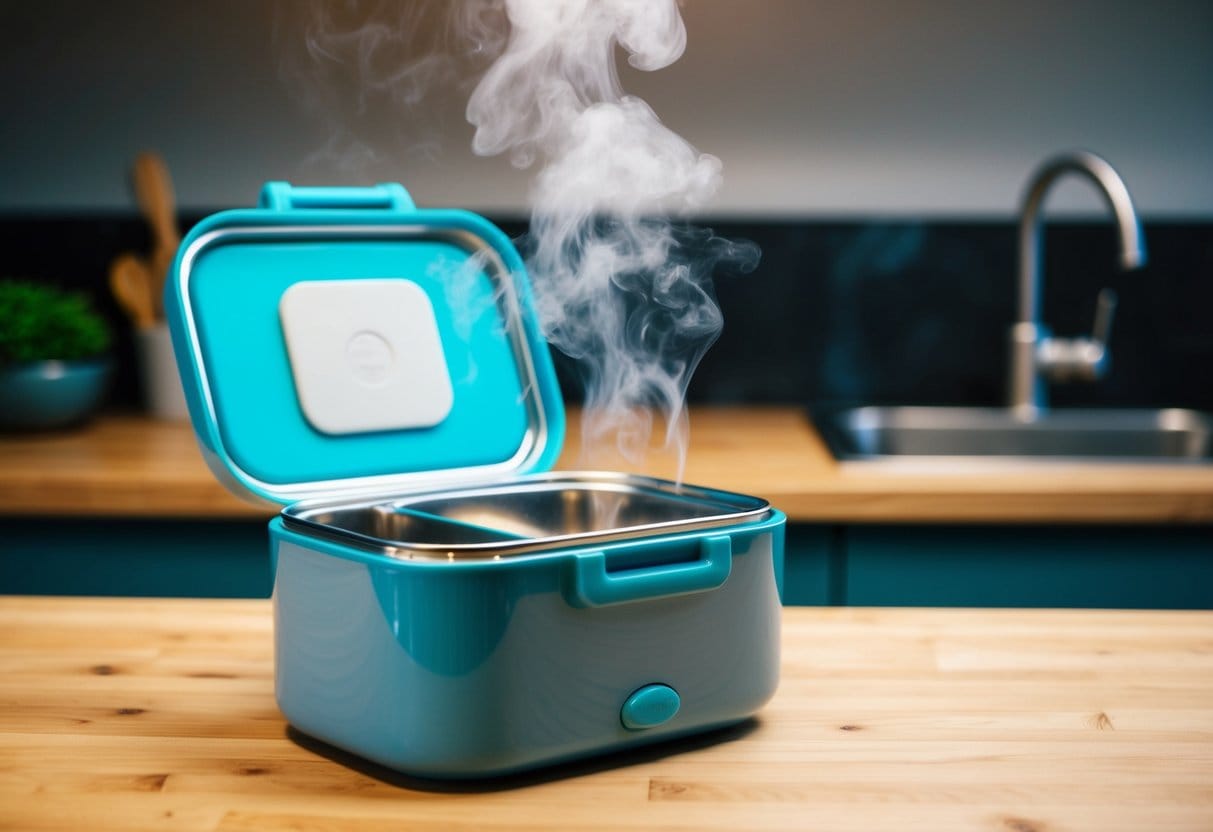A kitchen sink drain strainer is an essential yet often overlooked tool in your kitchen. It plays a crucial role in maintaining a clean and functional sink by catching food particles and debris before they can enter your plumbing system. A high-quality kitchen sink strainer can prevent clogs, reduce odors, and extend the life of your pipes.
We earn a commission if you purchase at no additional cost to you.
These handy devices come in various materials and designs to suit different sink types and personal preferences. From stainless steel to silicone, there’s a strainer for every kitchen. Some models offer additional features like built-in stoppers or pop-up mechanisms for convenience.
Choosing the proper kitchen sink strainer involves considering size, durability, and ease of cleaning. With proper selection and maintenance, a good strainer can save you time, money, and potential plumbing headaches in the long run.
Key Takeaways
- Kitchen sink strainers prevent clogs and odors by catching food debris before it enters your pipes.
- Various materials and designs are available to suit different sink types and preferences.
- Proper selection and maintenance of a sink strainer can save time and money on plumbing issues.
Types of Kitchen Sink Strainers
Kitchen sink strainers come in various designs to suit different needs and preferences. Two popular options are mesh baskets and stainless steel strainers, each offering unique benefits for keeping your drain clear.
Mesh Baskets
Mesh baskets are versatile and practical kitchen sink strainers. They typically feature a fine metal or plastic mesh that catches small food particles and debris. These strainers are easy to clean and can be removed for quick emptying.
Mesh metal sink strainers often have a wide, flat design that sits flush with the sink bottom. This allows you to stack dishes without interference. Some models come with a lift-out handle for convenient removal.
You’ll find mesh baskets in various sizes to fit standard sink drains. They’re an affordable option that provides reliable protection against clogs.
Stainless Steel Strainers
Stainless steel strainers are durable and long-lasting options for your kitchen sink. They resist corrosion and withstand heavy use, making them ideal for busy kitchens.
These strainers often feature a perforated design with small holes to trap debris while allowing water to flow freely. Many stainless steel models include a removable basket for easy cleaning.
You can find stainless steel strainers with different finishes to match your sink and faucet. Some high-end options offer a sleek, modern look with polished or brushed surfaces.
Stainless steel strainers are often considered the best kitchen sink strainers due to their durability and ease of maintenance. They’re a practical choice for those seeking a long-term solution to protect their plumbing.
Choosing the Right Diameter and Fit
Selecting the correct diameter for your kitchen sink strainer is crucial. Most standard kitchen sinks have drain openings between 3.5 and 4.5 inches wide.
Measure your sink’s drain opening carefully before purchasing a strainer. Use a tape measure across the widest part of the opening for accuracy.
The strainer should fit snugly in the drain without gaps. A tight seal prevents leaks and ensures proper drainage. Look for strainers with rubber gaskets for an extra watertight fit.
Consider these standard strainer sizes:
- 3.5 inches: Fits many modern sinks
- 4 inches: Standard size for many kitchen sinks
- 4.5 inches: Fits larger or older sink models
When shopping, compare your measurements to product specifications. Some manufacturers list both the overall diameter and the tailpiece diameter.
Remember that the strainer basket should be slightly larger than the drain opening. This allows it to sit securely on the lip of the drain.
Installation Process
Installing a kitchen sink drain strainer requires careful preparation and precise execution. With the right tools and step-by-step guidance, you can complete this task effectively and prevent potential leaks.
Tools Required
To install a kitchen sink drain strainer, gather these essential tools:
Having these tools on hand ensures a smooth installation process. The plumber’s putty creates a watertight seal, while the wrenches help secure components firmly in place.
Step-by-Step Guide
Remove the old strainer by unscrewing the locknut underneath the sink.
Clean the sink’s drain opening thoroughly.
Apply a ring of plumber’s putty around the new strainer’s underside.
Position the strainer in the sink’s drain opening, ensuring it sits evenly.
Attach the rubber gasket, friction ring, and locknut from under the sink.
Use the basket wrench to tighten the locknut securely.
Wipe away excess putty from around the strainer’s rim.
Connect the tailpiece to the strainer using the slip nut and washer.
Test for leaks by running water and checking all connections.
This methodical approach helps you install the sink drain strainer correctly, minimizing the risk of future plumbing issues.
Cleaning and Maintenance
Regular cleaning and maintenance of your kitchen sink drain strainer are essential for optimal performance and hygiene. Proper care prevents clogs, unpleasant odors, and bacterial growth.
Daily Cleaning Tips
Clean your sink strainer daily to prevent buildup. After each use, remove any visible debris and rinse the strainer with hot water. For stubborn residue, use a soft brush or sponge with dish soap.
Dry the strainer thoroughly to prevent rust and mineral deposits. Some strainers are dishwasher safe, making cleaning even more effortless. Check your product’s instructions to confirm.
Wipe down the surrounding sink area to remove splashes and prevent stains. This quick routine keeps your sink fresh and functional.
Deep Cleaning Methods
Perform a deep clean weekly or bi-weekly for optimal results. Remove the strainer and soak it in warm water and white vinegar for 15 minutes. This solution helps dissolve mineral deposits and kill bacteria.
For tougher grime, create a paste with baking soda and water. Apply it to the strainer and scrub gently with an old toothbrush. Rinse thoroughly.
To clean the drain, pour 1/2 cup of baking soda and 1/2 cup of white vinegar. Let it fizz for a few minutes, then flush with hot water. This natural method helps clear minor clogs and eliminates odors.
Common Issues and Troubleshooting
Kitchen sink drain strainers can encounter several problems that affect their performance. One common issue is clogging due to food particles and debris accumulation. You may notice slow drainage or standing water in your sink.
Another problem is a loose or improperly installed strainer. This can lead to leaks or ineffective debris filtering around the sink’s edges. Check for any gaps or movement in the strainer’s position.
Corrosion and rust can also impact your sink strainer’s functionality. Look for discoloration or flaking metal, which may indicate it’s time for a replacement.
If your strainer has a stopper mechanism, it might become stuck or fail to create a proper seal. This can result in difficulty filling the sink or unintended draining.
To troubleshoot these issues, start by removing and cleaning the strainer thoroughly. Use a mixture of baking soda and vinegar to dissolve buildup. For persistent clogs, try using a plumber’s snake or plunger.
Tighten loose components and apply the plumber’s putty to reseal the strainer if necessary. Replacing the strainer may be the best solution if it is damaged or severely corroded.
For stopper problems, inspect the mechanism for debris or damage. Lubricate moving parts with silicone grease to improve functionality.
If these DIY fixes don’t resolve the issue, consider consulting a professional plumber for more complex drain problems.
Frequently Asked Questions
Kitchen sink drain strainers are essential plumbing components that require proper selection, installation, and maintenance. Understanding the key aspects of these devices can help you make informed decisions and ensure optimal functionality.
How do you replace a kitchen sink drain strainer?
To replace a kitchen sink drain strainer, remove the old one. Loosen the locknut under the sink using pliers. Remove the old putty and clean the area. Apply fresh plumber’s putty around the new strainer’s rim. Please insert it into the sinkhole and tighten the locknut from below.
What types of kitchen sink strainer baskets are available?
Kitchen sink strainer baskets come in various types. Mesh strainers are standard and effective for catching small debris. Basket strainers have deeper receptacles for collecting larger food particles. Some models feature removable baskets for easy cleaning.
Are there different sizes for kitchen sink drain strainers?
Yes, kitchen sink drain strainers come in different sizes. The most common sizes are 3.5 inches and 4 inches in diameter. Measure your sink’s drain opening before purchasing a new strainer to ensure a proper fit.
What features should I look for in the best kitchen sink drain strainer?
Look for durable materials like stainless steel or brass for longevity. A tight mesh or small perforations help catch more debris. Consider a strainer with a basket for easy debris removal. Ensure the strainer has a good seal to prevent leaks. Furthermore, there is also 3 in 1 Kitchen Sink Stainless Steel Drain Strainer and Stopper Combo combining water storage, sink filter, and odor isolation functions,
How do you measure a replacement kitchen sink drain strainer?
Measure the diameter of your sink’s drain opening. Use a tape measure or ruler to determine the width across the center of the opening. Also, measure the depth of the sink at the drain to ensure the new strainer will fit properly.
Can a kitchen sink drain strainer be easily installed without professional help?
Most kitchen sink drain strainers can be installed without professional help. The process typically involves applying the plumber’s putty, inserting the strainer, and tightening the locknut. Essential tools like pliers and a putty knife are usually sufficient.
Is there an over-the-sink colander used to wash fruits and vegetables?
Yes, there is. This BPA-free Extendable Sink Colander set is a versatile kitchen tool to streamline food preparation and cleanup. It enhances kitchen efficiency by providing a convenient and adaptable solution for rinsing and draining needs. With dimensions of 13.5 × 7.2 × 2.5 inches and a maximum stretchable length of 17.7 inches, it fits various sink sizes, providing flexibility in different kitchen setups. This stylish kitchen essential is heat resistant up to 230°F, allowing you to cook your favorite dishes without any worries.
The colander strainer set includes three thoughtfully designed items:
- The Silicone Kitchen Sink Strainer is essential for capturing food particles in your kitchen.
- The Sink Colander Basket is ideal for rinsing vegetables and fruits and draining cooked pasta or spaghetti.
- The Silicone Sponge is versatile for cleaning vegetables, fruits, and dishes.
Before You Go
When washing fruits and vegetables in the sink, food particles and debris can easily clog the drain, making cleanup a hassle. A kitchen sink drain strainer helps trap these residues, prevent blockages, and clean your sink. However, a vegetable washing machine is a game-changer for a more thorough and efficient way to remove pesticides, dirt, and bacteria from your produce. This innovative device uses ultrasonic or ozone technology to deep-clean fruits and vegetables, ensuring they’re safe to eat while reducing the mess that typically ends up in your drain.






